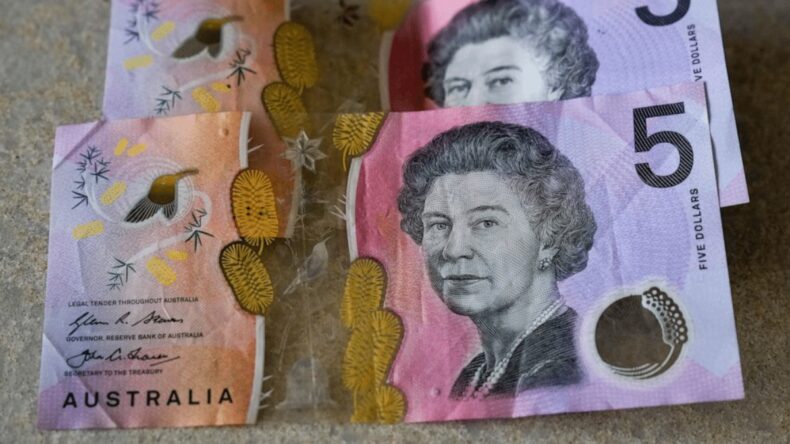Australia’s central bank announced on Thursday that the Australian $5 note will be replaced with an indigenous design instead of an image of King Charles III.
Changes Brought to $5 Australian Banknotes
The Reserve Bank of Australia announced the removal of ‘anything to do with the British monarchy’ on its banknotes. The $5 Australian banknote was the last one to feature a member of the British monarchy on its finish. It featured a portrait of Queen Elizabeth II.

King Charles III took to the throne of the United Kingdom after the passing away of Queen Elizabeth II. He became the United Kingdom’s head of state and the head of the Commonwealth, a group of 56 countries (including Australia) that were mostly former British colonies. Images of Queen Elizabeth II were used on banknotes in several Commonwealth nations.

Traditionally, the portrait of Queen Elizabeth II would be replaced with that of King Charles III on the Australian $5 note. However, the Reserve Bank of Australia announced that they wished to honour “the culture and history of the First Australians” and feature an indigenous design instead.
This decision was made after a nod from the Government of Australia.
Coins will, however, feature King Charles III portrait on them and the banknotes with Queen Elizabeth II’s portrait will continue to be legal tender.
It is unknown when the new $5 banknotes will be in circulation, but the new coins will be produced and circulated in “early 2024”.
Australia’s Colonial Past: Still in Discussion
Australia was originally inhabited by the Aboriginals; groups of people and tribes that lived in the subcontinent. They lived in mainland Australia and nearby islands like Tasmania, Fraser Island, Hinchinbrook Island, the Tiwi Islands, and Groote Eylandt.

The country has had a brutal colonial history that began upon the arrival of the British to its shores. Although the Dutch had discovered the land first, it was only after the arrival of the British that Europeans began to settle in Australia. Eventually the country became a colony under the British crown.

The colonial period in Australia is said to have been marked by encroachment on indigenous land, starvation, massacres, outbreak of diseases and military attacks; leading to a rapid decline in the Aboriginal population. The 2016 Australian Census revealed that Aboriginals comprise about 3.3% of Australia’s population.
The recent move by the Reserve Bank of Australia was supposedly taken in order to address and remove a piece of the country’s colonial past by honouring the indigenous culture instead.
Reactions to the Central Bank’s Decision
While many Australians welcomed the decision, there was significant opposition to it as well. Some find the decision unethical.

The government’s opposition leader Peter Dutton called the move an “attack on society” and “woke nonsense”. He also said that the central bank had no right to make a decision of that nature, accusing the institution of taking political sides.
Treasurer of Australia, Jim Chalmers, believes that it is a good decision that would help strike a balance. “The monarch will still be on the coins, but the $5 note will say more about our history and our heritage and our country, and I see that as a good thing,” he told reporters in Melbourne.

The British monarch remains Australia’s head of state, but these days that role is largely symbolic. Australia is debating to what extent it should retain its constitutional ties to Britain. Countries that are part of the Commonwealth are also rethinking their ties to Australia after the big move.
READ MORE: Australia takes charge of security of Pacific Islands













